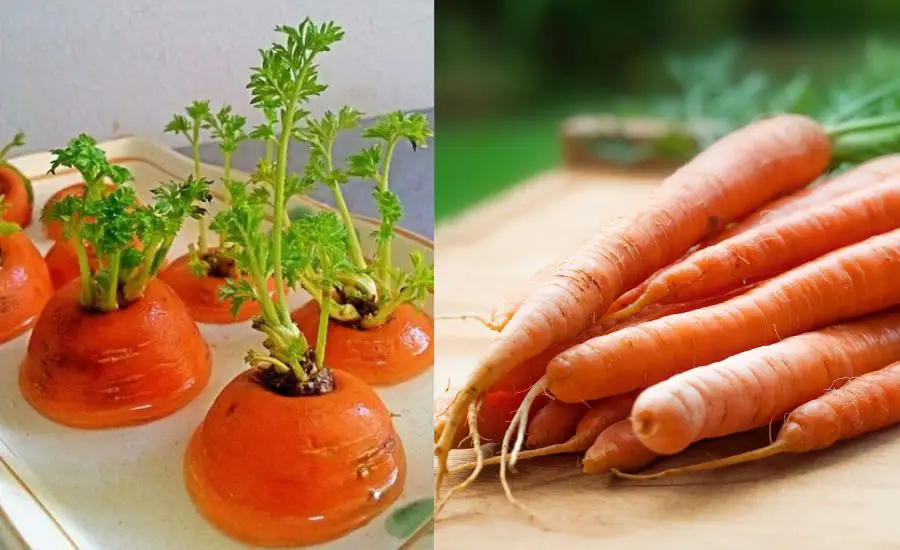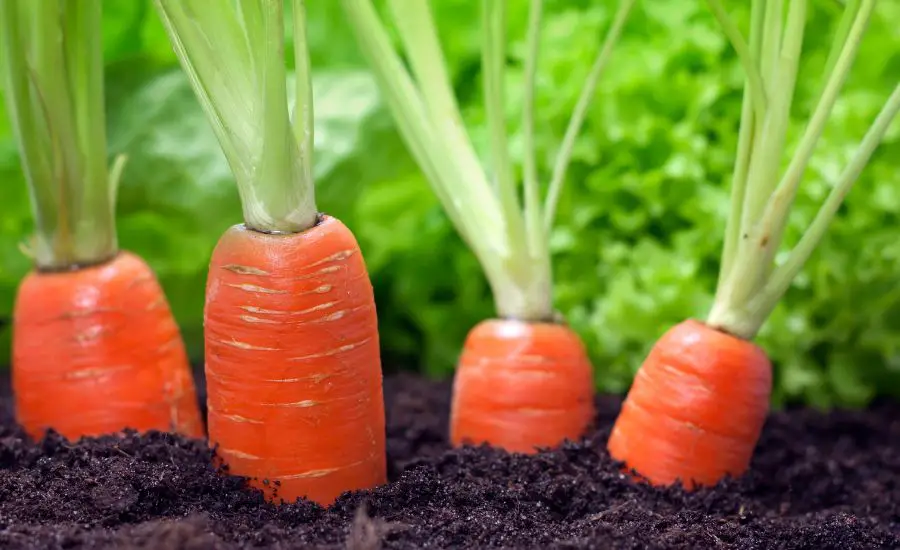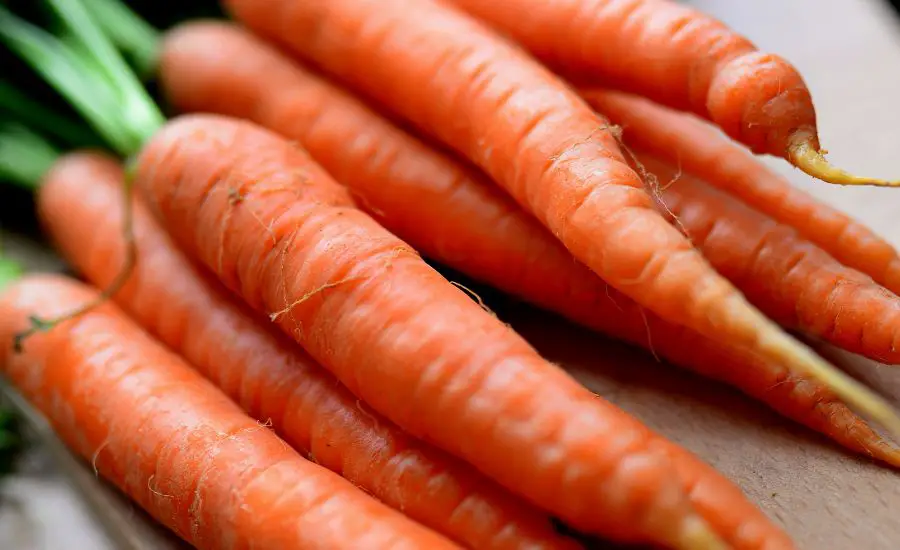If you’ve ever wondered, Can you grow carrots hydroponically? – the answer is a resounding yes! Not only is it possible to grow carrots in hydroponics now, but it also opens up a realm of benefits and opportunities for both seasoned gardeners and enthusiastic beginners.
Discover the various carrot plants ideally suited for hydroponic environments and the essential light requirements that facilitate growing carrots hydroponically.
Let’s unlock the potential, seize the possibilities, and witness firsthand the wonders of growing carrots hydroponically.

Contents
Hydroponic carrot cultivation guide
Discover the secrets behind successfully planting carrots in a hydroponic and understand the essential growing carrots requirements that ensure their optimal growth.
Planting carrots in hydroponics
The traditional methods of growing carrots in soil served humanity well for centuries, but as populations grew, space dwindled, and environmental concerns loomed, visionary gardeners sought a new path.
Gone are the days of traditional soil-based methods; hydroponics introduces us to an innovative and efficient way of nurturing these vibrant root vegetables.
Today, hydroponic system supplies plants seedlings cultivation thrives in diverse settings – from towering urban skyscrapers adorned with vertical farms to cozy backyard greenhouses.
The first step to a successful root vegetable lies in choosing the right carrot seeds to grow carrots in a hydroponic.
Unlike traditional soil gardening, hydroponic systems rely on a nutrient solution to nourish carrot plants directly at their root systems.
Light requirement for growing hydroponic carrots
Unlike their outdoor counterparts, to grow hydroponic carrots we should entirely rely on ourselves to provide the perfect balance of light to thrive and flourish.
While sunlight remains the gold standard, indoor hydroponic setups require artificial light sources meticulously calibrated to mimic the sun’s natural spectrum.
In a hydroponic environment, we must carefully select and position artificial lights to mimic the sun’s natural spectrum.
Modern hydroponic gardening enthusiasts have an array of lighting technologies at their disposal. LED grow lights, for instance, are energy-efficient and customizable, while high-intensity discharge (HID) lamps offer potent illumination for larger setups.

Gardening tips for growing hydroponic carrots
With valuable gardening tips and insights at your disposal, you’ll discover the key factors that lead to plump, flavorful carrots and learn the art of proper storage for future enjoyment to keep safe from pests such as carrot rust fly larvae.
Selecting the right carrot varieties: Opt for carrot seeds that are well-suited for hydroponic growth. Look for compact or mini carrot seeds type that doesn’t require deep soil, ensuring they fit seamlessly into your hydroponic system.
Creating the perfect nutrient solution: Your hydroponic-growing carrots thrive on a balanced and nourishing nutrient solution.
Ensure that the mix contains the right proportion of essential elements, including nitrogen, phosphorus, potassium, and micronutrients.
Temperature and humidity control: Keep a close eye on the environmental conditions in your hydroponic systems setup. Carrots prefer a cooler temperature range between 60 °F to 70 °F (15 °C to 21 °C) for growing medium.
Consistent watering schedule: Overwatering or underwatering can lead to stunted growth or root rot. Maintain a consistent watering schedule, ensuring that your hydroponic system provides adequate moisture to the carrots’ root zone.
Pollination and seed saving: While hydroponic carrots typically don’t require pollination, saving seeds from your successful harvest ensures a continuous cycle of growth for future crops with nutrient solution.
Remember that experimentation and adaptation are key to unlocking your green thumb’s true potential.

Why do carrots need a deep grow tray?
Unlike many other vegetables, carrots develop their prized edible part – the taproot – deep into the soil.
A deep grow tray in a hydroponic system is essential for promoting optimal growth and ensuring a successful harvest.
Inadequate space for root growth can lead to stunted and deformed carrots.
When grown in shallow trays, carrots may develop forked or twisted roots, compromising both their appearance and taste.
A deep grow tray allows for a larger volume of nutrient solution, ensuring that the carrots grow and have access to a consistent and abundant supply of essential elements in the growing medium.
A deep grow tray makes harvesting hydroponic carrots a breeze. With longer and well-defined roots, grow hydroponic carrots are more accessible and easier to remove from the growing medium.
Best carrot varieties
- Nantes carrots: Renowned for their sweetness and tender texture, Nantes carrots are a top choice for hydroponic gardeners.
- Cosmic purple carrots: As their name suggests, these captivating carrots boast a deep, rich purple color, creating a stunning visual appeal in any garden or dining table.
- Little finger carrots: If you’re tight on space or looking for a petite snack-sized treat, little finger carrots are the perfect fit.
- Bolero carrots: Seeking a carrot variety that thrives in a variety of climates and conditions? Look no further than Bolero carrots.
- Tonda di Parigi carrots: Step into the world of heirloom carrots with Tonda di Parigi, a delightful round carrot variety originating from France.
Selecting the best carrot varieties lays the foundation for a rewarding and fruitful experience.
Optimizing hydroponic carrot harvest
We will delve into the art of optimizing your hydroponic carrot growth, from understanding the numerous benefits to mastering the timing of your bountiful harvest.
Benefits of growing carrots hydroponically
With hydroponics, carrots receive an optimal blend of essential nutrients directly delivered to their root systems.
Hydroponically growing carrots cultivation transcends the boundaries of traditional gardening constraints.
This method utilizes up to 90% less water compared to traditional soil-based farming, minimizing waste and positively impacting our environment.
Hydroponic systems provide precise control over nutrient levels, ensuring carrots receive the ideal balance of essential elements for their growth.
Hydroponic garden enables the exploration of diverse carrot varieties that may not thrive optimally in traditional soil environments in the growing medium.

How long does it take to grow carrots hydroponically?
The timeline for hydroponic plants cultivation varies based on factors like variety and conditions.
Some cultivars are specifically bred for rapid growth, maturing in as little as 30 to 50 days. On the other hand, larger, more traditional varieties might require 70 to 80 days or even longer to reach their full potential.
The initial phase of any plant’s growth journey is seed germination. In hydroponics, carrot seeds typically sprout within 7 to 14 days, marking growing plants at the beginning of their growth trajectory in a hydroponic garden.
Following germination, the young carrot plants enter the vegetative growth stage.
On average, this stage spans 20 to 40 days, depending on the carrot seed variety and environmental factors.
Once the carrots reach their desired size and maturity, it’s time to harvest the fruits of your labor. Depending on the variety and growing conditions, this can occur anywhere from 40 to 80 days after germination in the growing medium and becoming fresh carrots.
The best time to harvest carrots
While size varies based on the carrot variety, a general rule of thumb is that mature carrots typically reach a diameter of around one inch and have a firm, straight appearance.
Avoid letting them grow excessively large, as this may lead to a woody or fibrous texture.
Once the crown starts showing vibrant shades of green and the foliage looks lush, it indicates that you have succeeded your carrots grown.
Carrots tend to be at their best when harvested during cool weather conditions. If possible, aim to harvest in the early morning or late evening, when temperatures are milder.
For those who prefer baby carrots, you can opt for an early harvest when the carrots are still young and tender.
How to store hydroponic carrots for later use
After harvesting, gently brush off any excess dirt from the carrots. Avoid washing them at this stage, as moisture can encourage spoilage.
Trim off the leafy green tops, leaving about an inch of the stem intact, as this helps retain the carrot’s freshness.
For short-term storage (up to a few weeks), place your cleaned and trimmed carrots in a perforated plastic bag or an open container lined with a damp paper towel.
If you have access to a root cellar or a cool, dark, and well-ventilated space, you can store carrots in boxes or bins filled with damp sand, sawdust, or peat moss.
For long-term storage, consider blanching your carrots in boiling water for a couple of minutes, followed by an immediate plunge into ice-cold water.
Whether stored in the refrigerator or root cellar, periodically inspect your stored carrots for any signs of spoilage.

FAQ
What vegetables cannot be grown hydroponically?
Examples of vegetables that are difficult to grow hydroponically include tuber crops like potatoes and sweet potatoes, as well as larger vine plants like pumpkins and watermelons.
Can you grow carrots in an aerogarden?
Yes, you can grow carrots in an aerogarden! Aerogardens are versatile and efficient hydroponic systems designed to facilitate the growth of various herbs, vegetables, and even root crops like carrots.
How long does it take for a carrot to grow in water?
The time it takes for a carrot to grow in water can vary, but typically, it takes around 4 to 6 weeks for hydroponic carrots to reach maturity and become ready for harvest.
Conclusion
Throughout this comprehensive guide, we have explored the two fundamental aspects of hydroponic carrot growth: the initial stages of planting and nurturing, and the art of growing plants and harvesting these vibrant delights.
Furthermore, we gathered valuable gardening tips to navigate the unique challenges that may arise in carrot seedlings cultivation.
Armed with this knowledge, we can address potential issues proactively, ensuring a thriving harvest every time.
A garden is a place that relaxes us and reflects our personal style, it’s a place to spend time with loved ones and grow our own fruits and vegetables. Maybe you’re looking for design inspiration or plant selection, or you’re concerned about garden privacy, shady areas, or pests, but don’t worry, you’ve come to the right place.

